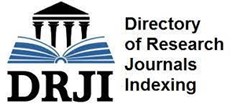Subject Area
Craniocervical junction, Trauma
Document Type
Original Study
Abstract
Background Data: The atlantoaxial segment of the cervical spine is a complex anatomic and functional structure. There are many diseases that can affect this segment and lead to instability as trauma, degenerative, inflammatory,neoplastic, or congenital diseases. It requires fusion for adequate immobilization and stabilization. Many surgical methods used for treatment of C1-C2 instability as posterior wiring techniques, C1–2 transarticular screws and lastly, C-1 lateralmass and C-2 pedicle screws fixation which has more advantages than other methods of C1–2 fixation.Study Design: Retrospective clinical case review. Purpose: The aim of this work is to evaluate the surgical technique and early outcome of C1 lateral mass and C2 pedicle screw fixation in post traumatic atlantoaxial instability.Patients and Methods: The study was conducted on 12 patients admitted in the emergency department of the main Alexandria university hospital presented with post traumatic atlantoaxial instability started from January 2010 till January2012. We did C1 lateral mass and C2 pedicle screws fixation using polyaxial screw system and rods. Ten patients (83.3%) were males and 2 females (16.7%) with age ranged from 21 to 48 years. Neck pain was the most common presentationin all the 12 patients (100%) followed by myelopathy in 6 patients (50%) and only 2 patients (16.7%) presented with sphincteric disturbance. Results: The average time for surgery was 135min. Blood loss ranged from 250 to900 ml with mean of 400ml. Dural tear occurred in only one patient (8.3%), with mild CSF leak postoperatively that stopped spontaneously. No vertebral artery injury was reported during surgery. The average hospital stay of the patientsranged from 2-10 days with a mean of 4 days. A total of 48 poly axial screws were inserted. We found that 40 screws (83.4%) were optimal in position, 8 screws (16.6%) were suboptimal including, 3 (6.2%) were medially directed, 2 (4.2%) were laterally directed, 2 (4.2%) were too long and only one screw (2%) was misplaced that needed to be reoperated for redirection. Neck pain improved in all the patients (100%) postoperatively, myelopathy improved in 5 patients (41.6%), and sphincteric disturbance improved in one patient (8.3%). Good fusion was achieved in 11 patients (91.7%) within 6 months. Conclusion: Lateral mass C1 and pedicle screw C2 fixation offer an alternative means of achieving atlantoaxial fusion. The technique is safer with less complication. Laminectomy or fracture of the posterior elements does not prevent the use of this fixation procedure. (2012ESJ019)
Keywords
atlantoaxial stabilization, cervical spine, screw fixation, C1 lateral mass, C2 pedicle
How to Cite This Article
Yehya, Ahmed
(2012)
"The Use of Lateral Mass C1 and Pedicle C2 Screw for Fixation of Post Traumatic Upper cervical Instability: Surgical Technique and Operative Outcome,"
Advanced Spine Journal: Vol. 3
:
Iss.
1
, Article 2.
Available at: https://doi.org/10.21608/esj.2012.3788























